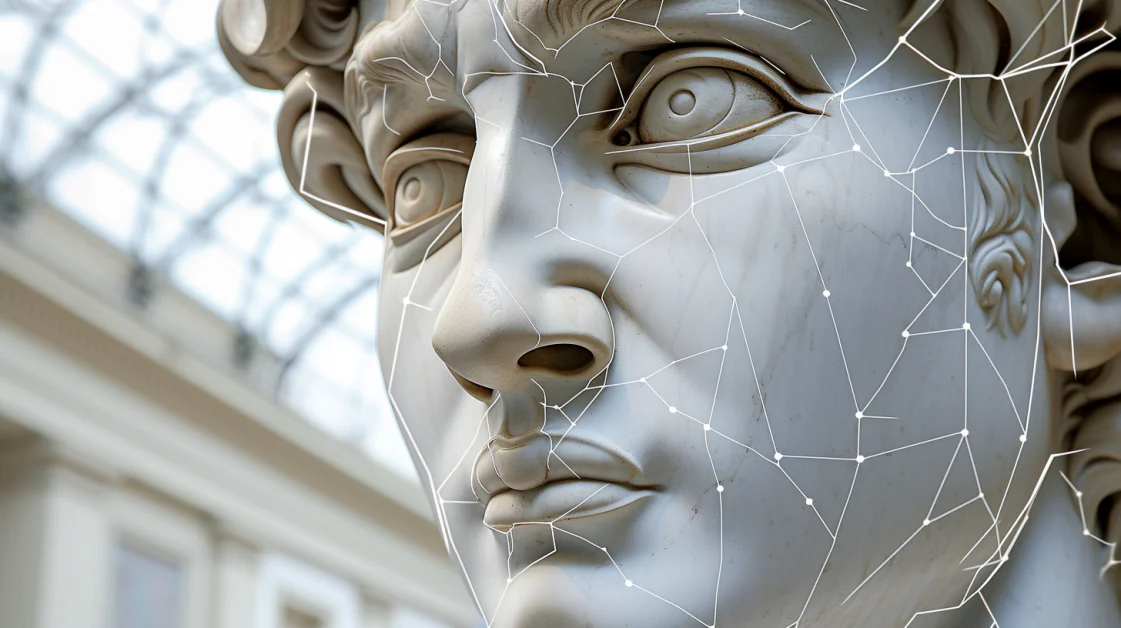Artificial Intelligence
Michelangelo’s David Meets Modern 3D Imaging Technology

The evolution of facial recognition technology has taken a big leap forward with the development of a new, more compact 3D surface imaging system. Spearheaded by researchers, this innovative technology significantly streamlines the facial recognition process, commonly used in unlocking smartphones and securing online bank accounts. Unlike traditional systems that rely on bulky projectors and lenses, this new approach utilizes flatter, simplified optics, making it a game-changer in the realm of personal and autonomous device security.
This groundbreaking technology was put to the test with an iconic subject – Michelangelo's David. The system's ability to accurately recognize the famous sculpture demonstrates not only its effectiveness but also its potential to transform how 3D surface imaging is integrated into various tech applications. From smartphone facial recognition to advancements in computer vision and autonomous driving, the implications of this sleeker imaging system are both far-reaching and exciting.
Innovative Design and Enhanced Efficiency
The new 3D surface imaging system stands out for its innovative design, which fundamentally differs from traditional dot projector systems. Typically, dot projectors comprise multiple components: a laser, lenses, a light guide, and a diffractive optical element (DOE). The DOE plays a crucial role by fragmenting the laser beam into an array of infrared dots, essential for facial recognition technology.
However, these conventional systems tend to be bulky, posing a challenge for integration into compact devices like smartphones. Addressing this issue, the research team led by Yu-Heng Hong, Hao-Chung Kuo, and Yao-Wei Huang introduced a more streamlined approach. They replaced the traditional dot projector with a combination of a low-power laser and a flat gallium arsenide surface. This significant modification not only reduces the imaging device's size but also lowers its power consumption.
A key feature of this new system is the use of a metasurface, created by etching a nanopillar pattern on the gallium arsenide surface. This metasurface scatters the low-powered laser light into a vast array of infrared dots, projected onto the object or face in front of the light source. In their prototype, the researchers achieved a scattering of 45,700 infrared dots, surpassing the typical count in standard projectors.
In addition to its compact size, the system's energy efficiency is noteworthy. Tests revealed that it requires five to ten times less power than common dot-projector systems. This efficiency, combined with the significant reduction in surface area (approximately 230 times smaller than traditional systems), marks a substantial improvement in the design of facial recognition technology.
Overall, this new 3D surface imaging system not only offers a more compact and power-efficient solution but also maintains high accuracy and reliability in facial recognition. Its successful identification of a 3D replica of Michelangelo's David, using a comparison of infrared dot patterns to online photos of the statue, underscores its potential to revolutionize the field of 3D imaging in various technological applications.

The facial recognition system scans a bust of Michelangelo’s David and reconstructs the image.
Potential Applications and Future Prospects
The advent of this new 3D surface imaging technology opens up a plethora of potential applications across various industries. Its streamlined design and enhanced efficiency make it particularly suited for smartphone facial recognition. This technology can provide a more compact and energy-efficient alternative to current systems, potentially transforming how facial recognition is integrated into mobile devices.
Beyond smartphones, this technology has promising applications in the field of computer vision. Its precise imaging capabilities could enhance systems used in autonomous driving vehicles, where accurate and reliable 3D surface recognition is crucial for navigation and obstacle detection. The compact nature of the technology could also facilitate its integration into smaller autonomous devices, broadening the scope of its application.
In robotics, this new imaging system could play a crucial role. Robots equipped with this technology could have improved interaction with their environment, enabling more precise and nuanced actions. This would be particularly beneficial in fields where delicate handling or detailed work is required.
Looking to the future, the industry could see significant advancements stemming from this technology. As it gets refined and adapted for various uses, we might witness a shift towards more compact, power-efficient imaging systems across technologies that rely on 3D surface imaging. This could lead to the development of new products and services that were previously limited by the size and power constraints of existing imaging systems.
Moreover, the integration of such technology could spur advancements in AI and machine learning, where accurate and efficient 3D imaging is essential for training and operational algorithms. The potential for reduced power consumption also aligns with the growing emphasis on sustainability in technology, making this an attractive prospect for future developments.
This new 3D surface imaging system not only holds promise for enhancing existing applications but also paves the way for innovative developments in various technological domains. Its impact could be far-reaching, potentially changing the landscape of 3D imaging technology in the years to come.














